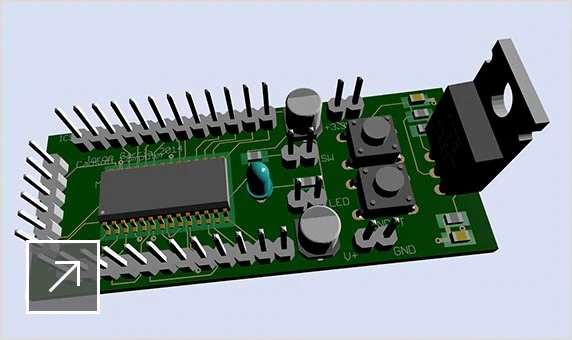Are you ready to tackle your high-voltage electrical projects with confidence? Understanding the intricacies of a 3 prong 220 plug wiring diagram is essential for anyone looking to safely and effectively manage their electrical setups. Whether you're powering heavy-duty appliances, setting up a workshop, or working on a DIY project, mastering the wiring of a 220 plug can make all the difference. In this blog post, we'll break down the components, provide a clear wiring diagram, and offer tips to ensure your installation is both safe and efficient. Let's dive into the world of high-voltage wiring and empower you to master your electrical projects!
220 Volt Dryer Outlet Wiring Diagram 3 Plug
When it comes to setting up your 220-volt dryer outlet, understanding the wiring diagram for a 3-prong plug is crucial for ensuring safety and functionality. A typical 3-prong 220-volt dryer outlet features three connections: two hot wires, which carry the current, and one neutral wire, which serves as a return path. In the wiring diagram, you'll notice that the two hot wires are usually color-coded in black and red, while the neutral wire is typically white. This configuration allows for a total of 240 volts, providing the necessary power to run your dryer efficiently. Properly wiring your outlet not only maximizes performance but also minimizes the risk of electrical hazards, making it essential for DIY enthusiasts and homeowners alike to master this high-voltage setup.
 wiringlibraryburton.z13.web.core.windows.net
wiringlibraryburton.z13.web.core.windows.net 220v Plug Wiring Diagram
When it comes to setting up a 220V electrical system, understanding the wiring diagram for a 3-prong 220 plug is essential for both safety and functionality. A typical 220V plug features three prongs: two hot wires and one ground wire. The hot wires, usually colored black and red, carry the electrical current, while the green or bare wire serves as the ground for safety. In a standard wiring diagram, you'll find that the two hot wires connect to the corresponding terminals on the plug, while the ground wire connects to a designated terminal, ensuring a secure and efficient connection. Mastering this wiring diagram not only empowers you to handle high-voltage setups confidently but also helps prevent potential hazards associated with improper wiring. Whether you're installing a new appliance or upgrading your electrical system, knowing how to wire a 3-prong 220 plug is a crucial skill for any DIY enthusiast or homeowner.
 www.tankbig.com
www.tankbig.com 3 Prong Electrical Plug Wiring
When it comes to wiring a 3 prong 220 plug, understanding the configuration is crucial for both safety and functionality. A typical 3 prong plug includes a hot wire, a neutral wire, and a ground wire, each serving a specific purpose in your high-voltage setup. The hot wire, usually colored black or red, carries the electrical current, while the neutral wire, often white, provides a return path for the current. The ground wire, typically green or bare, acts as a safety measure to prevent electrical shock by directing excess current away from the device and into the ground. When wiring your 3 prong 220 plug, it's essential to follow the correct wiring diagram to ensure that each wire is connected properly, minimizing the risk of short circuits or electrical fires. Mastering this wiring process not only enhances your electrical project's safety but also ensures optimal performance for your high-voltage appliances.
 stewart-switch.com
stewart-switch.com Understanding 220 Volt Stove Wiring: A Simple Diagram
Understanding 220 volt stove wiring is essential for anyone looking to safely and effectively connect their high-voltage appliances. A simple wiring diagram can demystify the process, highlighting the crucial components involved in a 3-prong 220 plug setup. Typically, this configuration includes two hot wires, which carry the current, and a ground wire for safety. By following a clear diagram, you can ensure that your stove is wired correctly, minimizing the risk of electrical hazards while maximizing performance. Whether you're a DIY enthusiast or a seasoned electrician, mastering this wiring can empower you to tackle your kitchen installations with confidence.
 allwiringsketch.com
allwiringsketch.com Three Prong 220 Volt Plug
When it comes to setting up high-voltage appliances, understanding the three prong 220 volt plug is essential for both safety and performance. This type of plug is designed to handle the higher amperage required by heavy-duty devices, such as dryers, ovens, and air conditioners, ensuring a stable and efficient power supply. The three prongs consist of two hot wires and one ground wire, which work together to provide a balanced electrical load while minimizing the risk of electrical shock. In this blog post, we'll delve into the intricacies of the 3 prong 220 plug wiring diagram, guiding you through the installation process and helping you master your high-voltage setup with confidence.
 diagramdatachartres.z4.web.core.windows.net
diagramdatachartres.z4.web.core.windows.net Other Wiring Gallery

elecsprout.com
Wiring Diagram For 3-prong 220 Volt Plug

diagramio.com
Understanding European 220v Plug Wiring

manualpentathlon.z14.web.core.windows.net
220 Dryer Plug Wiring Diagram 4 Wire

wiringmaster.com
Understanding 220 Wiring: A Simple 3-wire Diagram

www.tankbig.com
220v Plug Wiring Diagram

doknit.blogspot.com
Dryer Outlet Wiring Diagram 3 Prong

moowiring.com
Understanding The Wiring Diagram Of A 3-prong 240v Plug

wiringlibraryburton.z13.web.core.windows.net
You Might Also Like: Ford 40L Engine Diagram Workhorses
220 Volt Dryer Outlet Wiring Diagram 3 Plug

 automotorpad.com
automotorpad.com  wiringdiagram.2bitboer.com
wiringdiagram.2bitboer.com ![[diagram] 2001 ford f 250 starter solenoid diagram](https://i0.wp.com/annawiringdiagram.com/wp-content/uploads/2019/02/99-ford-expedition-starter-wiring-diagram-wiring-library-ford-f250-starter-solenoid-wiring-diagram.jpg) mydiagram.online
mydiagram.online  easywiring.info
easywiring.info  circuitblaze.com
circuitblaze.com 



 storage.googleapis.com
storage.googleapis.com  www.familyhandyman.com
www.familyhandyman.com  resolutionsforyou.com
resolutionsforyou.com  kaptenmods.com
kaptenmods.com  www.youtube.com
www.youtube.com 






 autoctrls.com
autoctrls.com  carschematics.com
carschematics.com  design1systems.com
design1systems.com  headcontrolsystem.com
headcontrolsystem.com  carschematics.com
carschematics.com 





